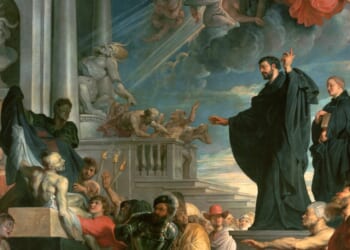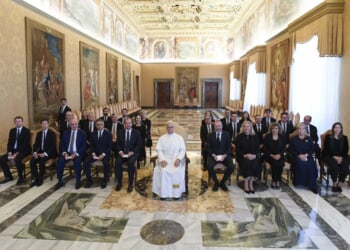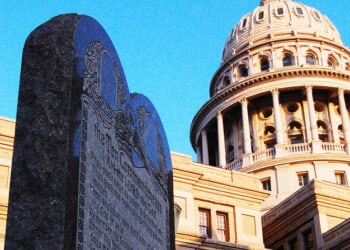His name was Matias, meaning “gift of God” or “gift of the Lord.”
He was 17 years old.
At 7:20pm on Monday, October 7, 2024—the Memorial of Our Lady of the Rosary—Matias intentionally stepped into the path of a fast-moving MBTA commuter train passing through the town of Ipswich, MA. He was struck and died instantly.
By all accounts, Matias was an extraordinary, exceptional, and beloved young man. A senior at Ipswich High School, he participated in concert band, wind ensemble, and jazz band. He played a variety of sports—soccer, football, track and field, and tennis. He earned a black belt in martial arts. A world traveler, he visited Canada, England, Colombia, Mexico, and France as well as several Caribbean islands. Matias’ obituary describes him as “a kind, gentle, soft-spoken young man with an infectious smile and curious spirit.”
On that dreadful October night, a young life was lost, a family was shattered, and the town of Ipswich was devastated.
To this day, no one can explain Matias’ terrible choice to end his precious life. The agonizing questions linger, and the grief cuts deep. However, this much we know to be true: Matias’ suicide is just one example of the thousands that occur each year in the United States. The following dire statistics are provided by the American Foundation for Suicide Prevention. The facts are staggering:
- In the U.S.A., the year 2022 was marked with the highest number of suicides on record.
- In 2023, 49,316 Americans died by suicide.
- In 2023, there were an estimated 1.5 million suicide attempts in the U.S.A.
According to the National Alliance on Mental Illness, in 2023, more than 1 in 5 high school students seriously considered attempting suicide and 1 in 10 attempted suicide. In 2024, 10% of teenagers contemplated suicide.
By all accounts, the widespread psychological pain of our present generation is real and deep. The wounds cry out for healing.
The terrible, undeniable reality is that there exists a scourge of depression, fear, addiction, anxiety, faithlessness, darkness, and hopelessness which is plaguing the youth—and the adults—of our nation. For many, each moment lived is a Calvary.
This is, at its root, a spiritual crisis. Clearly, a spiritual remedy is urgently needed.
Ipswich is my hometown. From the moment I heard the news of Matias’ passing, I’ve not been able to shake the pervading sorrow. An admittedly macabre confession: since that dreadful Autumn evening in 2024, I have dropped by the MBTA train station 3-4 days each week, sitting for countless hours on a black-painted wooden bench mere feet from the precise spot where Matias ended his life.
At each visit, I would pray, meditate, write, read, and observe the incoming and outgoing commuters. I would talk directly to Matias. One hot August afternoon, I asked Matias point-blank, “What is the difference between you and me, friend? Why did you choose to step onto that track, into the oncoming, speeding train’s path, and I do not?” A voice, gentle, loving, and mysteriously familiar whispered to my soul: “Hope. You have hope.”
What is hope?
In his stunningly beautiful book, The Portal of the Mystery of Hope, Charles Péguy underscores a fundamental Catholic teaching: the three theological virtues are faith, hope, and charity—a sacred triptych that expresses the heart of the Christian life. In Péguy’s words, “Hope is the supernatural virtue by which we await God with confidence, his grace in this world and eternal glory in the next.” Again, Péguy, “The faith that I love the best, says God, is hope.”
On May 9, 2024, Pope Francis issued a Bull of Indiction of the Ordinary Jubilee of the Year 2025—proclaiming 2025 as the Jubilee Year of Hope. The Papal document features the Latin title SPES NON CONFUNDIT—“Hope does not disappoint” (Rom. 5:5). The Jubilee is centered on the theme “Pilgrims of Hope,” and Catholics are urged to embrace hope and deliver hope to others. The call is to serve as its ambassadors.
There is an enormous amount of work to be done.
Reflecting on the Jubilee, Pope Francis said, “We must fan the flame of hope that has been given us, and help everyone to gain new strength and certainty by looking to the future with an open spirit, a trusting heart and far-sighted vision.” In SPES NON CONFUNDIT, Francis asserts that “The death and resurrection of Jesus is the heart of our faith and the basis of our hope.” Hope, Francis explains, “gives inward direction and purpose to the life of believers.”
Today marks the one-year anniversary of Matias’ death. Again, it is the Memorial of Our Lady of the Rosary. On Tuesdays, Catholics pray the Sorrowful Mysteries. Today, I will especially pause at the First Sorrowful Mystery, the Agony in the Garden, and consider the brutal mental anguish that Matias must have suffered before stepping onto that Ipswich train track one year ago.
As I pray, I will meditate on Mary—the Theotokos—the Queen of Heaven, and rest in the confidence that the Mother of God has already crushed the serpent’s head and firmly defeated Satan through the Incarnation of Jesus in her womb (Heb. 2:7). Surely, Mary has already won the raging battle of nihilism vs. faith, darkness vs. light, and despair vs. hope. In Pope Francis’ words: “Hope finds its supreme witness in the Mother of God. In the Blessed Virgin, we see that hope is not naïve optimism but a gift of grace amid the realities of life.”
Today’s Rosary will conclude, as it always does, with the Salve Regina, the Hail Holy Queen:
Hail, Holy Queen, Mother of Mercy,
our life, our sweetness and our hope.
To thee do we cry,
poor banished children of Eve.
To thee do we send up our sighs,
mourning and weeping in this valley of tears.
Turn then, most gracious advocate,
thine eyes of mercy toward us,
and after this our exile
show unto us the blessed fruit of thy womb, Jesus.
O clement, O loving,
O sweet Virgin Mary.
Mary teaches us that hope rests in our fiat—our yes to life.
Matias’ mental suffering was his cross, and Matias’ cross—like each of our own—points to Jesus’ sacrifice. It is in looking to the Cross that we see Our Lord suffering but, at the same time, are reminded of Our Lord risen. The joy of our redemption and the hope for our salvation are inextricably tied to His brutal crucifixion.
This truth is eternal: Stat crux dum volvitur orbis—“the Cross stands firm while the world turns.” May we always look to it for strength and for hope.
We mourn your passing, dearest Matias, but your blessed life—and the cross you bore—will not be forgotten. May it inspire us to serve as missionaries of hope. May it compel us to pronounce the Good News to an anguished world.
Requiescat in pace, friend.
Photo by Matt Palmer on Unsplash










